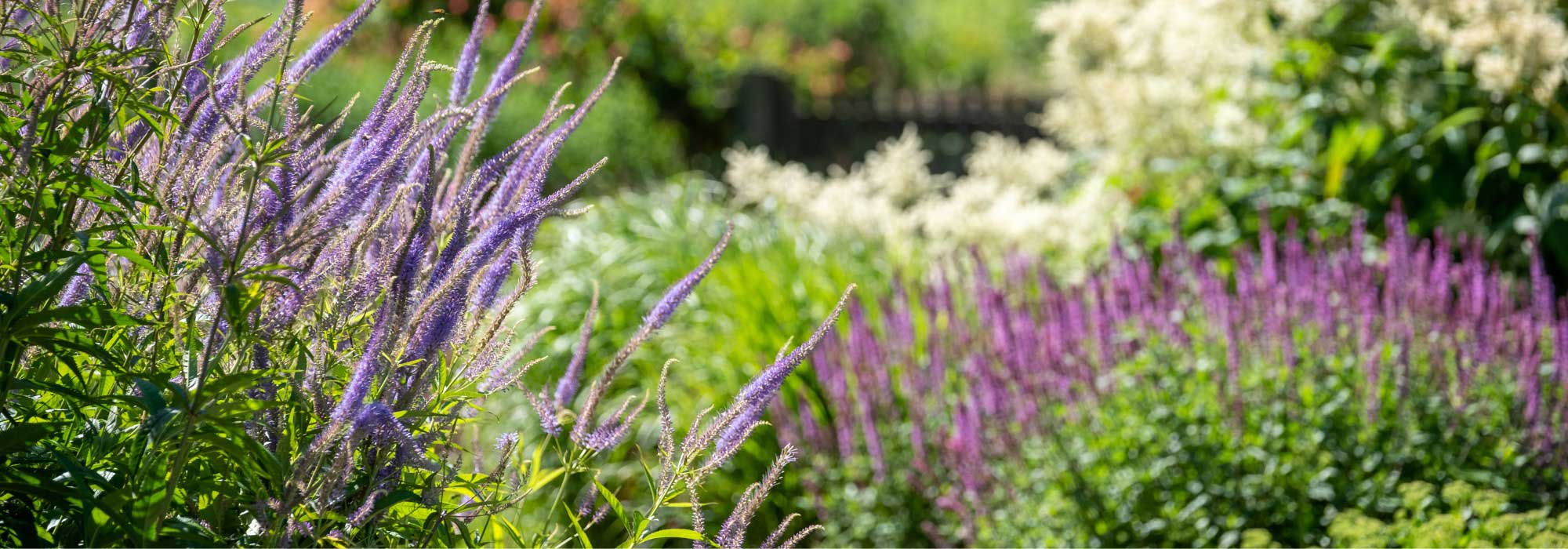
Garden Trend 2025: Naturalistic Aesthetics Inspire a Rustic and Relaxed Style
A haven of wild and vibrant nature
Contents
Once perceived as a wild force to be tamed, nature is now being reconsidered, reintegrated, revealing the beauty of a liberated garden. This shift is reflected in practices that are more respectful of natural cycles. Today, gardens are embracing a wilder look and a form of deliberate spontaneity. Driven by a genuine desire for rewilding, this movement encourages making space for wild herbs, valuing native and resilient plants, natural habitats, and the free dynamics of the landscape.
In pursuit of a return to primal nature, we yearn for a free, abundant setting. Discover our selection of cottage garden plants and our tips for creating a naturalistic, countryside-inspired garden at home.
The naturalistic and rustic aesthetic in the garden – what is it?
Today’s garden responds to our ever-growing need to be surrounded by wild nature. Far from strictly organised gardens, it favours a certain letting-go, embracing a more spontaneous and untamed aesthetic. This type of garden draws inspiration from prairies, clearings and natural landscapes. It’s a freely interpreted take on the pure naturalistic garden.
The naturalistic and rustic garden, as conceptualised in the late 19th century by pioneers like Jens Jensen in the United States, then popularised in the 1980s by Piet Oudolf through the New Perennial Movement, is based on an in-depth reflection on ecosystems, plant dynamics and landscape over time, advocating the use of perennials and grasses. The garden with a naturalistic aesthetic draws inspiration from this without necessarily following its rigour. It adopts its spirit – lush vegetation, loose composition, diversity of species – but distinguishes itself through a more intuitive, often less structured approach. It offers a more accessible and sensory version of this model, focused on emotion, our sensory connection to nature, and the desire to recreate a wild refugium close at hand.
Less codified, it is driven by a desire for spontaneous nature and charms with its simplicity as much as its ability to bring a touch of countryside into contemporary gardens. This type of garden reminds us that nature manages perfectly well on its own, if only we give it the freedom to do so.
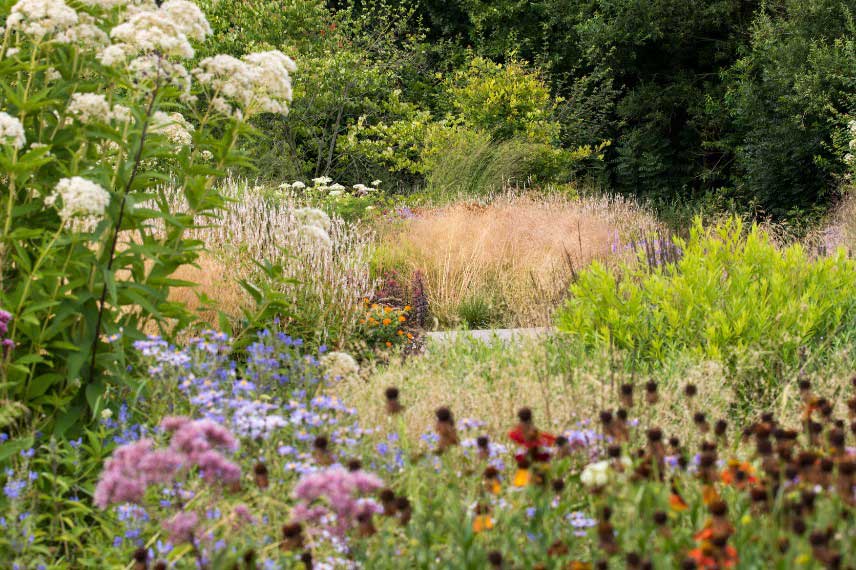
Garden designed by Piet Oudolf in Utrecht (Netherlands)
Read also
Best melliferous plants by seasonHow to interpret it in the garden?
It’s a garden without artifice, in perfect harmony with nature. The plants thrive freely without formal constraints. The borders are composed of airy perennials, undulating grasses, and charmingly old-fashioned meadow flowers. No rigidity in the lines: the plants intermingle, creating a landscape that shifts with the seasons. The whole gives an impression of gentle abundance.
It brims with wild herbs, umbellifers, artless meadow flowers, native species, and carefree nativars, offering us a free, flourishing nature that fosters biodiversity. Easy-going and hardy, the Anthemis, Centaurea, Thalictrum, Digitalis… compose an authentic garden that embraces a certain relaxed approach.
The perspectives remain soft, barely structured by light elements such as wattle fences or raw wood railings. Here, we follow the recommendation of the French Biodiversity Office and the League for the Protection of Birds to limit tree pruning between March and July to protect bird nesting. The idea is to promote biodiversity by preserving the natural habitats of birds and all small wildlife, offering them safe refuges to reproduce. Immersed in this green paradise, far from manicured gardens, it’s carefree simplicity and soothing ease that reclaim us.
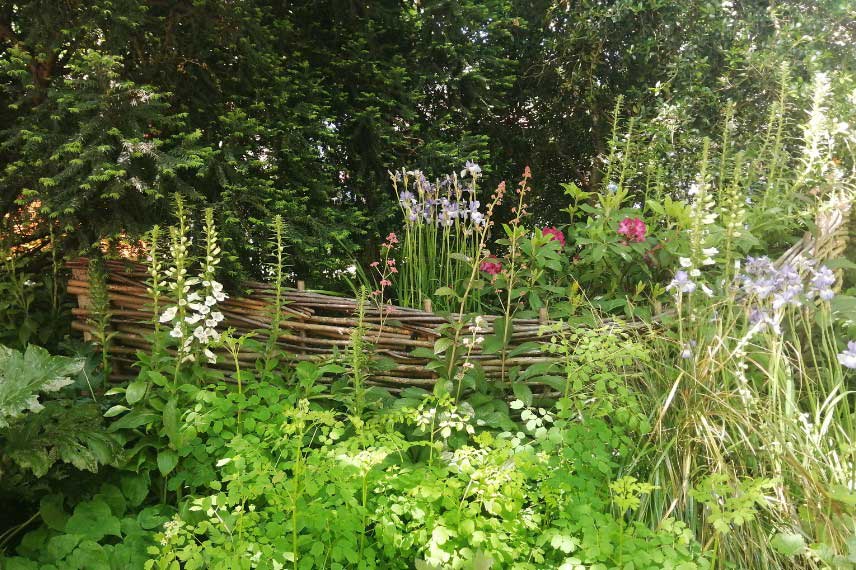
In a cottage garden, plants mingle very freely, without formal constraints. A few wattle borders can enhance the wild and natural aspect of the garden.
The colour palette of a naturalistic and rustic garden
The colour palette of a meadow-inspired garden draws directly from wild landscapes and spontaneous prairies. It favours soft, natural and shifting tones, in harmony with the rhythm of the seasons. The overall effect is a composition full of subtle nuances, never garish, evolving gracefully over time. This palette contributes to the garden’s soothing and immersive atmosphere:
- Pastel and powdery tones: soft pink, lilac, mauve, cream… bring a romantic and understated lightness.
- Soft whites and muted yellows: ideal for brightening borders while maintaining a natural feel.
- Blues and violets: often introduced by Centaurea, salvias or campanulas, they add depth and a touch of freshness.
- Warm late-summer tones: ochre, rust, bronze, brick… found in drying foliage or late-season flowering, they warm up the scene as the season draws to a close.
- Varied greens and golden grasses: foliage plays a major role, from spring’s tender greens to the silvery or gilded reflections of summer grasses.
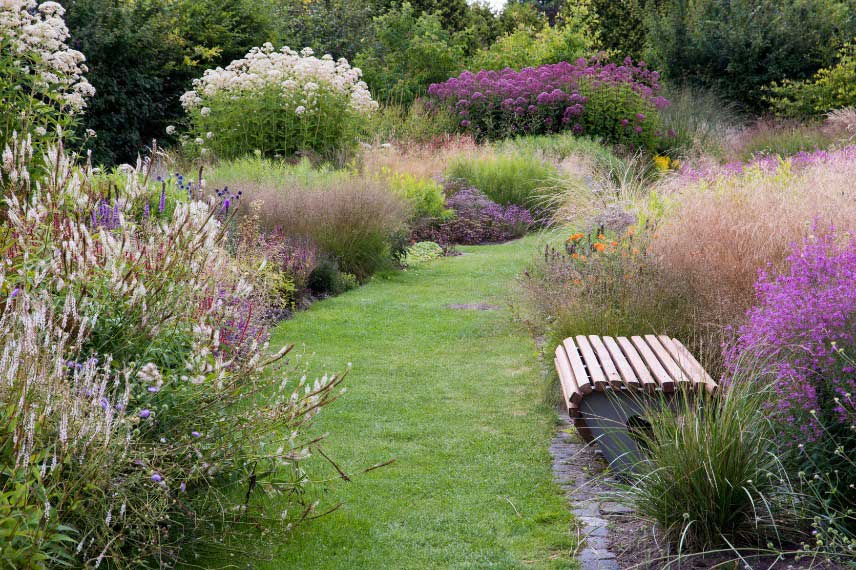
Plants in a naturalistic garden display a palette of soft, pastel tones: delicate pink, mauve, cream, white, bronze, copper… Piet Oudolf’s garden in Utrecht (Netherlands)
Read also
Sowing a flower meadow: why, howThe Plant Palette for a Naturalistic Garden Aesthetic
Expressive and long-lasting. The naturalistic and rustic garden aesthetic relies on a generous plant composition, where plants are arranged in masses, self-seeding with the wind and evolving naturally through the seasons. The goal is to create long-lasting ornamental displays, vibrant for much of the year, with striking seasonal effects and prolonged, evolving flowering periods. This dynamic is built on a selection of robust species, blending perennial plants and airy ornamental grasses.
Hardy and Melliferous Perennial Plants
Whether hailing from the vast North American plains or native to local regions, these perennial plants combine hardiness and low maintenance. Adaptable to a wide range of soils, whether dry or moist, they form a dense and enduring plant base, ideal for structuring the garden while supporting biodiversity: Geranium pyrenaicum ‘Bill Wallis’, Blue Centaurea, Euphorbia cornigera, Lunaria annua, Sweet Sultan ‘Splendens Purple’, Burnet ‘White Brushes’, Aster ‘Schneegitter’, and Cynoglossum ‘Firmament’ (Chinese Forget-Me-Not).
Stately Presences
To introduce rhythm, volume, and strong visual impact, tall perennial plants are essential. They bring breath to borders and create vertical plant lines that shift with the light and wind: Anthriscus sylvestris, Cephalaria, Digitalis purpurea, Thalictrum ‘Yulia’, Silene latifolia ‘Alba’, Baptisia ‘Purple Smoke’, Veronicastrum, Selinum wallichianum, and Cosmos atrosanguineus ‘Chocamocha’.
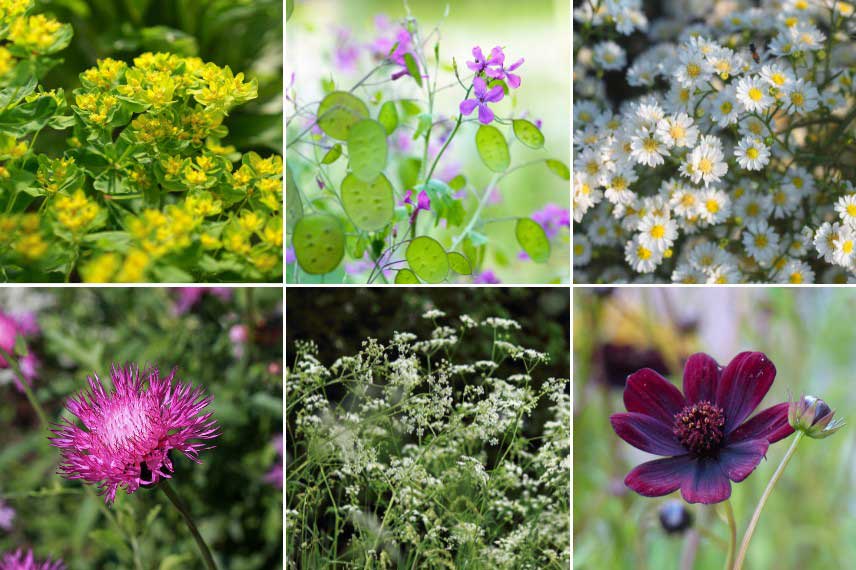
Euphorbia cornigera, Lunaria annua, Aster ‘Schneegitter’, Centaurea moschata ‘Splendens Pourpre’, Anthriscus sylvestris (photo: Rüdiger Stehn), Cosmos atrosanguineus
Nativars (a fusion of native plants and cultivars)
Naturally hardy and indigenous to France, they benefit from great adaptability to local environments: Salvia nemorosa ‘Caradonna’, Centranthus ruber, Leucanthemum vulgare, Red Campion or Silene dioica.
Essential Ornamental Grasses
A key element of this naturalistic trend, ornamental grasses bring movement, capture light, and extend aesthetic interest into winter. Their flexible habit and shifting hues gently complement flowering plants and provide refuge for small wildlife. Graphic, evergreen, or ephemeral, they embody the spontaneous elegance of this garden style: Pennisetum ‘White Lancer’, Calamagrostis, Melica, Molinia, Schizachyrium, Chasmanthium, Sesleria, Stipa, Miscanthus, and Pennisetum.
→ Also discover: 10 Iconic Perennial Plants for Naturalistic Gardens
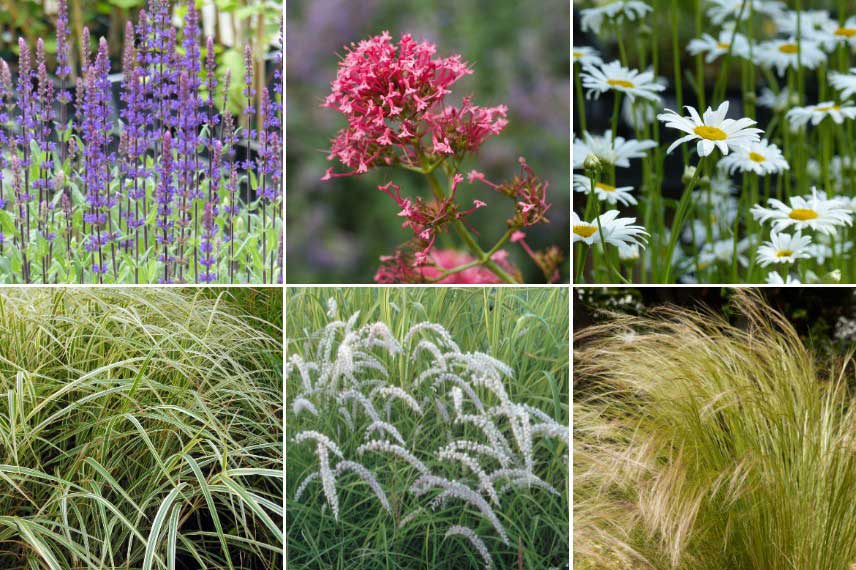
Salvia nemorosa ‘Caradonna’, Centranthus ruber, Leucanthemum vulgare ‘Maikonigin’, Miscanthus sinensis ‘Variegatus’, Pennisetum orientale ‘Tall Tails’, Stipa tenuifolia
Perfect the decor
To enhance the naturalistic and rustic aesthetic of the garden, every non-plant element should blend in seamlessly without disrupting the wild and spontaneous balance of the space. The furniture remains understated, crafted from raw or time-worn materials: untreated wood benches, aged metal chairs, natural stone tables… Structures such as wattle fences, trellises, or wood edging define without enclosing and maintain a rustic charm.
Decorative elements — nesting boxes, insect hotels, green-roofed shelters — find their place with effortless simplicity, reinforcing the garden’s ecological purpose. water, even in subtle forms, remains a key feature: a natural pond, an old trough or a single basin provide both an aesthetic focal point and a vital resource for birds and insects.

To strengthen the naturalistic style of your garden, incorporate furniture and decorative elements made from natural materials (wood, stone, wattle edging, etc.). They should blend effortlessly into the surroundings!
- Subscribe!
- Contents































Comments